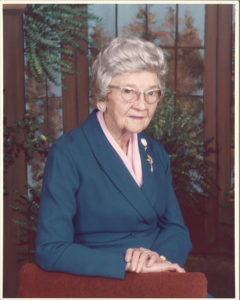When you drive by historic houses in Frisco, do you ever wonder about the people who once lived there? There is an interesting story behind every one of these Frisco heirlooms, regardless of a home’s current appearance. Sometimes, you just have to research to uncover the history about a landmark you may travel by every day.
Take the old, dilapidated farmhouse on Main Street, at the southeast corner of Brinkmann Ranch, between Coit Road and Independence Parkway, for example. The almost spooky looking house certainly has seen better days, and it will soon be torn down due to Main Street widening and nearby developments. Research shows that the house was once a beautiful cottage-style home that sat on a 264-acre family farm. It was a home filled with love and was impeccably maintained by the young Carter Fisher family for decades. Let us go back in time to tell the tale!
Most of the farmland surrounding Frisco was first deeded to families in the 1840s under the terms of the Peters Colony Land Grant negotiated with the Republic of Texas just prior to Texas becoming a state. Pioneers came primarily from Kentucky and Tennessee seeking the rich soil for farming. They arrived in Texas in droves because the land was free. A single man was granted 320 acres, whereas a family was granted 640 acres.
Long before there was Frisco, these farmers birthed Lebanon and Little Elm, the two largest towns in the area during the mid-1800s. They also developed the nearby settlements of Foncine, Rock Hill, Bethel, Erudia and a few others that are now incorporated into Frisco’s city limits. Most of these early settlements were spaced three to four miles apart (about the maximum range children could either walk or ride their horses to school), with one-room schoolhouses located in the center of the town.
Carter Fisher’s father, Robert Coleman Fisher, arrived in McKinney in 1872. The Fisher family had followed a wagon train west in their migration from Kentucky to California, but they stopped for Robert’s birth and found temporary employment in Edina. Three years later, they read a Peters Colony land advertisement and traveled south on the Shawnee Trail to McKinney to take advantage of the free 640 acres. In 1890, Robert married his first wife, Maimee, the daughter of the prominent McKinney McDonald family. Sadly, Maimee passed away at only 21 years old after giving birth to Carter’s half brother and half sister.
Robert headed west to the small town of Foncine. He started a general store, gristmill, gin and a grain elevator. Robert and his second wife, Eliza Carter, wed in 1895 and had six children, with Benjamin “Carter” being the oldest.
Robert, an interesting, successful pioneer, also bought a large farm near present-day Rogers Road and Fisher Road (which was aptly named for his family). Before the mechanical age of farming, he was legendary for his unbounded energy. He could drive two separate breaking plows, running to the head of the team and turning it while the other team caught up at the corner. He was also one of the bidders present on February 7, 1902, when the very first lots in downtown Emerson (later re-named Frisco) were sold by auction.
After Carter’s birth in 1896, he was raised in Foncine and then later at the Fisher family farm. In 1914, after growing up attending school, Carter left to fight in World War I. He returned in 1917 and spent the next 10 to 15 years working on several Fisher family farms in both Collin and Denton counties. Carter married Celestia Kanaman of Frisco in either late 1919 or early 1920. U.S. Census records report that Carter was 23 and Celestia was 20 when they wed. School records do not show either of them ever graduating from Frisco schools. The 1930 U.S. Census reports that they rented a home in rural Denton County, but the 1940 U.S. Census shows they owned the Main Street farmhouse by that time.
It is believed that Carter built the farmhouse in the mid-1930s with help from his brothers and a few contractors. The house is now approximately 80 years old. The original house was described by past Frisco mayor Bob Warren as “a typical California bungalow.” It had just two bedrooms, a kitchen, a formal pantry area, a combined living room and dining room and an outhouse in back. The Fisher house was larger than most cottages, measuring around 884 square feet. Another 400-500 square feet were added in two later phases, bringing the home to a roomy 1,300-1,400 square feet. The new additions brought a third bedroom, plus a very large light and bright back room (that was used by later tenants as either a family room or a fourth bedroom) plus two bathrooms.
Carter was frugal and built these two additions mostly by hand with materials bought during good crop years. The house was built entirely of wood, with the exception of two brick columns on the front porch. Most homes in Frisco were not brick (Jim Newman built the first brick house in Frisco in 1918 at the southern-most point on 5th Street).
On U.S. Census forms and military records, the formal address of the historical house was listed as “Frisco, Texas, Collin County, four miles east of town.” It was assigned a permanent Main Street address sometime after being incorporated into Frisco in 1984. It was not an easy drive to downtown Frisco across four miles of a muddy, rutted FM 720 road. One of the closest neighbors to the house was the Box Ranch, the predecessor to Brinkmann Ranch.
Unlike his father, who had 13 servants helping on his farm (according to the 1900 U.S. Census), Carter now had the advantage of modern farm automation like tractors and combines. Carter grew grains like maize, corn, wheat and cotton. He raised cattle, horses and chickens. Before this farm became overgrown with trees, a 1968 aerial map shows a neatly mowed farm with a large barn and almost a dozen out buildings behind the farmhouse.
 Celestia was known as an immaculate housekeeper. The house was fashionably decorated and included polished wood floors and a beautiful chandelier in the formal dining room. Celestia represented a new generation of farmers’ wives who were not out elbow-deep in the fields when they were not cooking or doing household chores. The advent of farming automation reduced the need for wives to assist at harvest time.
Celestia was known as an immaculate housekeeper. The house was fashionably decorated and included polished wood floors and a beautiful chandelier in the formal dining room. Celestia represented a new generation of farmers’ wives who were not out elbow-deep in the fields when they were not cooking or doing household chores. The advent of farming automation reduced the need for wives to assist at harvest time.
Whereas Celestia was quite social, Carter preferred to spend his time alone in the fields. Patsy Scott remembers his high degree of intelligence, saying, “Carter had the finest mind.” Fellow farmer, Bob Hooper, recalls that Carter always had the cleanest truck in town and sometimes drove the tractor in a shirt and tie. Carter only left the farm for church, a few farm-related errands and to attend close family funerals. However, he helped his nephew, Jasper Fisher, with Boy Scout Troop 290 (Frisco’s oldest Boy Scout troop, now Troop 298) in the mid-1940s.
The Fishers’ only child, Mary Celestia Fisher, was born on July 26, 1925, in Frisco. A 1928 Frisco Journal article shows 3-year-old Mary attending a party with the then 7-year-old future mayor Bob Warren. Mary’s grandfather, Robert Fisher, passed on April 15, 1942, and she later attended the University of Michigan and became an actuary. She rarely returned to Frisco, but her past classmates describe her as an intelligent and accomplished business woman who successfully competed in a business world then dominated by men. She started her own nationwide actuarial consulting firm in 1964.
During the years the Fishers worked the farm, farming was the number one occupation in Frisco, as well as the city’s primary economic generator. Farming was the primary topic of conversation and it was even taught in school, which was routinely let out in late September and early October for the two-week cotton harvest that required all hands on deck. The Cobb brothers and Dale Newman are known as the last family farmers in town, and they harvested their final crops in 1998, signaling the end of the farming era in Frisco.
After Carter experienced a stroke in the late 1960s, he and Celestia moved to their retirement “city house.” Various members of the extended Fisher family worked the farm and the farmhouse was rented out to decades of tenants. Sadly, Carter passed away in 1972 and Celestia died in 1986.
Celestia had sold the family farm in 1983, at the height of the Frisco “bubble,” as land speculators swooped in and bought up family farms by the dozen. Sam Roach, a longtime community leader, says, “I had known the Fishers all of my life. We went to the Frisco Methodist Church. I shall always remember this particular transaction because the buyers made an offer and then upped it a little to approximately $4.7 or $4.8 million. During one of my visits with Celestia, she kind of smiled at me and said, ‘$5 million has such a nice ring to it.’” The farm was sold to a group of land speculators who were later absorbed into Brinkmann Ranch’s vast holding of 3,500 acres. Carter had bought the farm for approximately $25 an acre, based on Sam Roach’s comparative mid-1930s farm transactions in the immediate area, and then sold it in 1983 for $18,939 per acre.
Mary passed away in 2004. She donated $8.5 million to Children’s Medical Center of Dallas to create a fund to hire pediatric physicians and train young physicians to become clinical researchers. She was a generous donor to the Frisco Methodist Church and she is listed as one of the top women and alumna philanthropists from the University of Michigan.
What a philanthropic donation to make to Children’s Medical Center. It was quite a large donation from what was such a small farming family. Back then, the Fishers probably lived on a tight farmer’s budget. During some bad weather years, they might not have had any crop revenue and probably bought groceries from Henry’s Grocery on credit. Now, they may be smiling down from above knowing that their hard work and personal sacrifices helped so many sick children.
What will happen to the 80-year-old farmhouse now? As of July of 2015, the portion of the farm and the farmhouse were bought from Brinkmann Ranch by Landon Development at a reported average price of $174,240 per acre. It is soon to be developed as part of the new Lexington gated community. The house is no longer structurally sound enough to be moved or remodeled and there is too much wood rot for it to be saved. The roof and floors have caved in and the new owners have posted “no trespassing” signs for the public’s safety.
Every old house has a story. The Frisco residents who made this farmhouse their home have a history and played an important role in the past. If the walls of houses here in Frisco could talk, they would likely tell amazing tales and share a wealth of history that we might otherwise never know.






